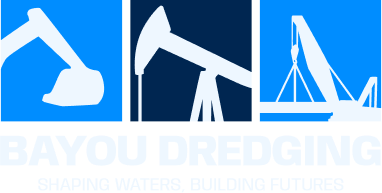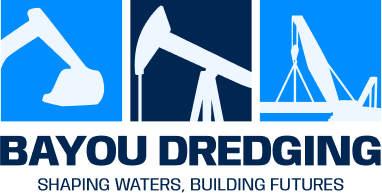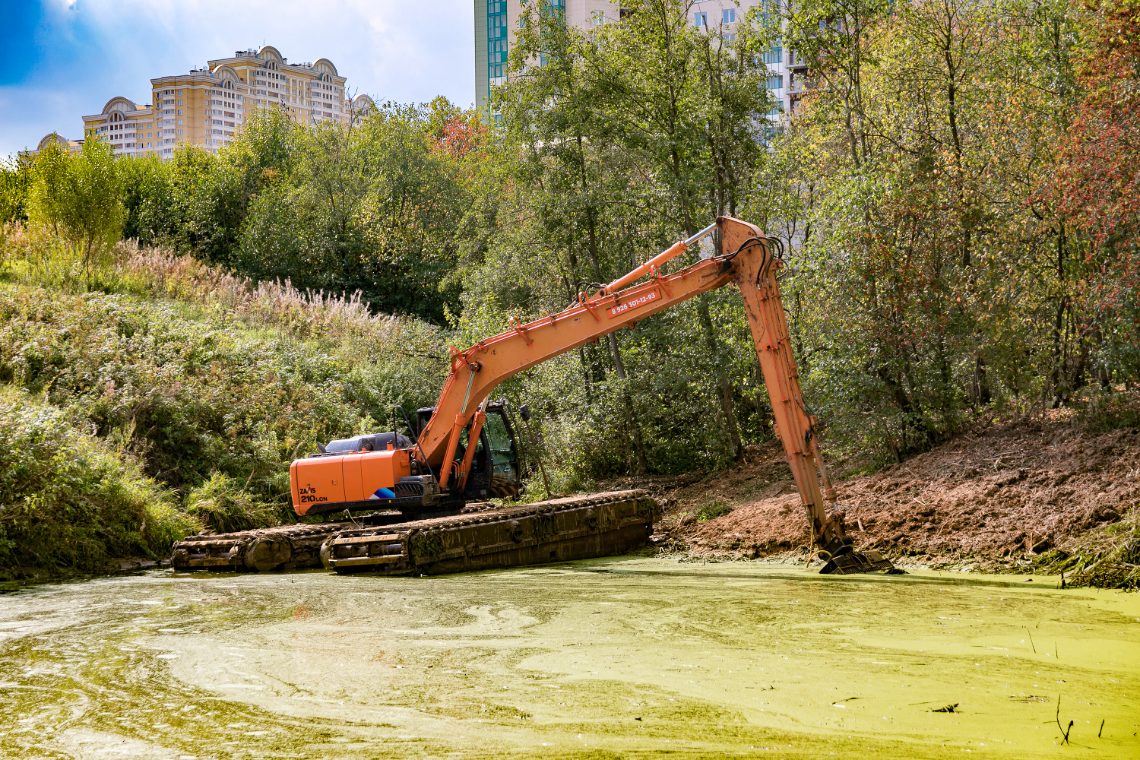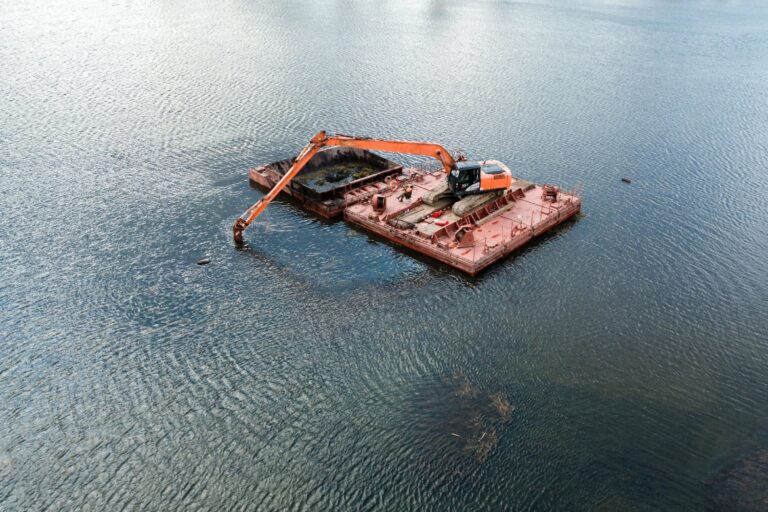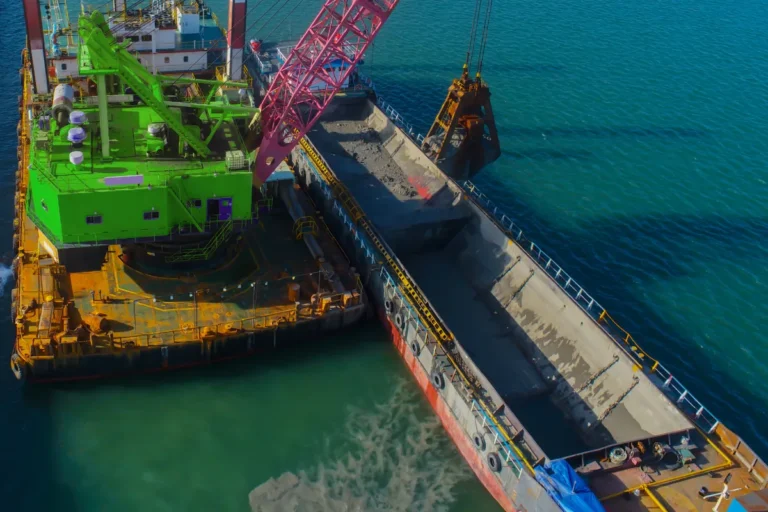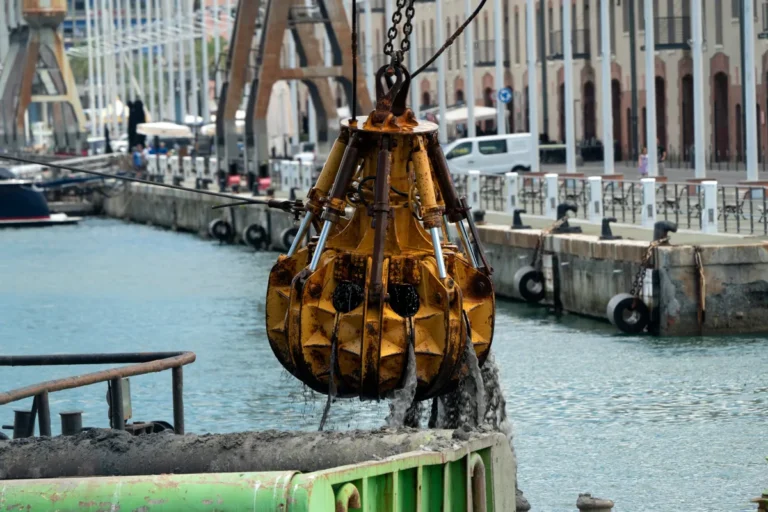Amphibious dredging services provide a specialized solution for projects in challenging environments, such as wetlands, tidal flats, marshes, and shallow water bodies, where traditional dredging equipment cannot operate effectively. By combining buoyant undercarriages with versatile hydraulic attachments, amphibious excavator dredges offer unmatched access to soft, unstable terrain, eliminating the need for extensive site preparation or support infrastructure. This guide explores the fundamentals, equipment configurations, key applications, and operational best practices of amphibious dredging, enabling engineers, contractors, and environmental managers to understand how these systems enhance efficiency, minimize environmental impact, and meet the demands of complex projects.
The Fundamentals of Amphibious Dredging
What “Amphibious” Really Means in Dredging
In dredging operations, the term “amphibious” refers to equipment specifically engineered to function in both wet and dry environments, particularly in areas where soft terrain, shallow waters, or unstable ground conditions would normally prevent access by traditional dredging machines. Amphibious dredging services utilize specialized machines—most commonly amphibious excavator dredges—that are equipped with enhanced flotation and traction systems, enabling them to navigate marshlands, swamps, tidal zones, and wetlands without the need for external pontoons or barges.
A defining feature of amphibious dredging equipment is the integration of sealed buoyancy pontoons. These pontoons are mounted on either side of the undercarriage to provide the necessary flotation in waterlogged or saturated environments. Additionally, track modifications—such as extra-wide, low-ground-pressure tracks—help distribute weight evenly across unstable substrates, reducing the risk of the machine sinking or becoming immobilized. This combination of buoyancy and traction makes amphibious excavators indispensable in remote or environmentally sensitive dredging projects.
Core Components of an Amphibious Excavator Dredge
Amphibious excavator dredging relies on a range of purpose-built components that work together to deliver stable, efficient, and safe performance in variable terrain. At the foundation is a specialized undercarriage equipped with extended track chains and sealed pontoons. These pontoons are often segmented and filled with air or foam to maintain flotation, even in the event of partial damage.
Hydraulic spuds—vertical stabilizing legs—are commonly used to anchor the excavator during operations, especially when precision or steady positioning is required in moving water or unstable ground. For material removal, the excavator is typically equipped with cutter heads or dredge buckets that loosen sediment, vegetation, or sludge, which is then pumped away using a high-efficiency slurry pump mounted directly to the boom or undercarriage.
Some advanced configurations integrate submersible slurry pumps that are hydraulically driven and designed to move high-viscosity or abrasive materials over long distances. These components, working in tandem, enable amphibious excavator dredges to operate in locations where standard track excavators or floating dredges would be impractical or cost-prohibitive.
How Amphibious Excavator Dredging Differs from Conventional Methods
Amphibious dredging services stand apart from conventional dredging techniques primarily through their ability to maintain mobility in semi-solid substrates. Traditional dredging equipment, such as barge-mounted excavators or cutter-suction dredges, often requires stable water depths, firm access points, or additional infrastructure, including cofferdams and temporary roads. In contrast, an amphibious excavator dredge can move freely through shallow, soft-bottomed, or partially flooded areas without external support.
Another major advantage is the significantly reduced mobilization time and site preparation requirements. Because amphibious equipment is self-propelled and highly maneuverable, it can be deployed quickly and start work immediately, even in remote or ecologically sensitive locations. This reduces both operational costs and environmental impact, making amphibious dredging an ideal choice for time-sensitive or restricted-access projects.
Equipment Profiles & Configurations
Standard Amphibious Excavator Platforms (5–30 Ton Class)
Amphibious dredging services typically utilize excavators with operating weights ranging from 5 to 30 tons, depending on the scope and complexity of the project. These amphibious excavator dredges are built on widened, sealed undercarriages equipped with pontoon flotation systems, enabling them to work in saturated soils, swamps, and shallow water environments.
Smaller units in the 5–13 ton range are well-suited for tight-access projects such as canal clearing, wetland restoration, and stormwater pond maintenance. Mid-range platforms, weighing around 20 tons, are commonly used for riverbank stabilization and sediment removal in tidal areas. For heavy-duty operations involving significant material displacement or abrasive slurry handling, 30-ton class amphibious excavator dredging platforms offer the power and reach needed for efficient production.
All platforms are typically engineered for low ground pressure and extended track widths, ensuring stable movement across semi-fluid terrain. Some models are modular in design, allowing pontoons to be detached for easier transport and reassembly at remote worksites.
Attachments & Tooling Options
One of the strengths of amphibious dredging services lies in the adaptability of the amphibious excavator dredge, which can be equipped with a wide range of tooling and attachments. Depending on the material type and desired dredging outcome, contractors can equip the machine with:
- Cutter Suction Heads: Ideal for breaking up compacted or cohesive sediments before suction pumping. Often paired with hydraulic slurry pumps for direct transfer to discharge lines.
- Rake Buckets and Rake Bars: Used for clearing aquatic vegetation, debris, and surface sediment. These attachments are particularly effective in lake and reservoir maintenance projects.
- Submersible Pumps: Mounted on the boom or stick of the excavator, these pumps enable high-volume slurry transfer in waterlogged zones. Designed for heavy sludge, sand, and silt applications.
Each attachment can be easily interchanged to suit the evolving needs of amphibious excavator dredging operations, offering versatility across multiple project phases.
Support Vessels and Ancillary Equipment
To maximize the efficiency of amphibious dredging services, a range of support and auxiliary systems is typically deployed alongside the primary excavator. These include:
- Booster Pumps: Positioned along the pipeline route to maintain discharge pressure and extend pumping distance, especially in long-haul or uphill transfers.
- HDPE Discharge Pipelines: Lightweight, flexible, and resistant to corrosion and abrasion, these pipes are the standard for transporting dredged material from the amphibious excavator dredge to dewatering or disposal areas.
- Floating Hoses: Used to bridge the gap between the dredge pump outlet and the shoreline, ensuring smooth material flow while adapting to changing water levels and dredge movement.
Together, these components form a comprehensive and scalable amphibious dredging system, designed to adapt to diverse operational demands, varying terrain types, and diverse sediment profiles.
Key Applications for Amphibious Dredging Services
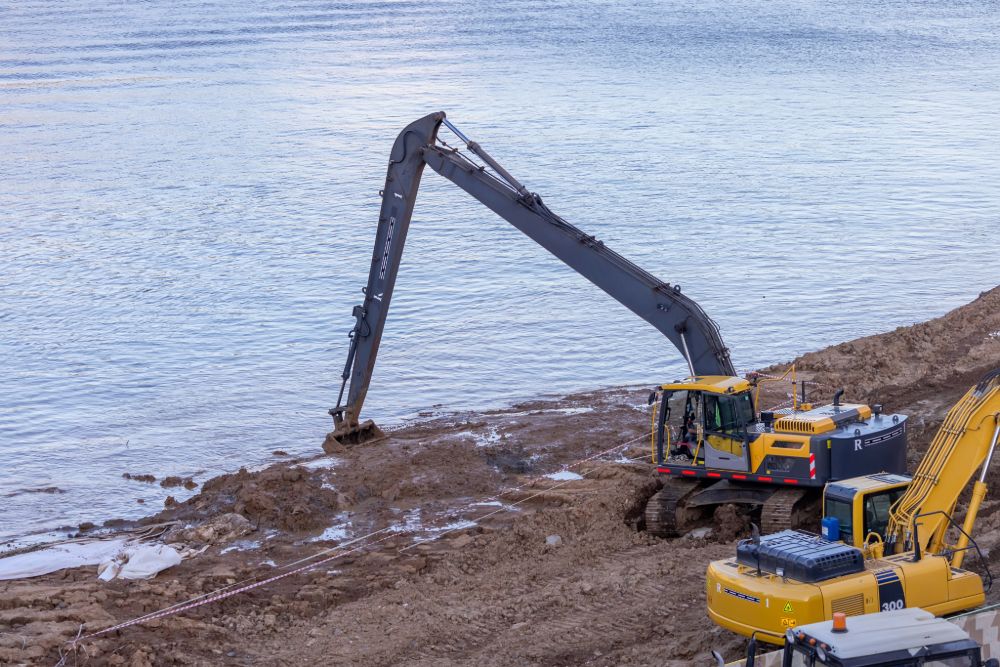
Amphibious dredging services are uniquely positioned to address a range of complex projects where traditional dredging equipment would be either inefficient or inoperable. The combination of flotation, traction, and versatility makes the amphibious excavator dredge a critical tool in environments where soft soils, shallow water, and limited access are standard challenges.
Wetland Restoration and Sludge Removal
Wetlands play a vital role in biodiversity, flood mitigation, and water quality. However, these environments are highly sensitive and typically inaccessible to conventional heavy equipment. Amphibious dredging services enable the precise removal of sediment and organic matter using low-ground-pressure machinery that minimizes environmental disturbance. The amphibious excavator dredge can operate directly within marshes and shallow basins, efficiently removing sludge, invasive plant material, and excess nutrients that compromise the health of wetlands.
Flood-Control Channel Maintenance
Urban and rural flood-control infrastructure often includes channels, levees, and drainage basins that accumulate debris, sediment, and vegetation over time. Amphibious excavator dredging is ideal for maintaining these systems, particularly in low-flow or saturated conditions. With the ability to operate in shallow or intermittently flooded zones, amphibious machines can clear blockages, re-establish flow profiles, and restore hydraulic capacity, reducing flood risk without the need for dewatering or damming.
Port and Marina Sediment Management in Shallow Drafts
Sediment accumulation in port entrances, boat slips, and marina basins is a persistent operational concern. Amphibious dredging services provide a cost-effective alternative to floating dredges in shallow or fluctuating water depths. The amphibious excavator dredge can remove sediment buildup while tracking along the shoreline, slipways, or mudflats, ensuring navigable conditions are maintained with minimal disruption to operations or vessel traffic.
Oil-and-Gas Pipeline Trenching in Tidal Flats
Pipeline installation and maintenance in coastal or intertidal zones present unique engineering challenges. These areas are often too shallow for barge-mounted equipment and too unstable for tracked vehicles. Amphibious excavator dredging offers a practical solution by enabling trenching, backfilling, and sediment relocation in areas subject to tidal fluctuations. The equipment’s mobility in mudflats and estuarine environments allows for precision work without the need for extensive site modification.
Mining Tailings Pond Reclamation
Amphibious dredging services are increasingly used in mining operations, especially for tailings pond reclamation and sediment management. These ponds often contain fine particulate slurries and semi-fluid waste materials that are unsafe for standard excavation equipment. The amphibious excavator dredge can access and remove tailings without compromising stability, enabling more efficient reclamation, volume recovery, or environmental remediation.

Step-by-Step Workflow
Amphibious dredging services follow a structured and methodical process to ensure operational efficiency, environmental compliance, and project success across varied terrain. Whether the project involves wetland restoration, sediment removal, or trenching, the use of an amphibious excavator dredge requires specialized planning and execution at each stage. Below is a typical workflow for amphibious dredging operations.
Site Assessment and Soil Profiling
Before initiating any amphibious dredging services, a thorough site assessment is conducted to evaluate access constraints, water depth, substrate consistency, and environmental factors. This stage includes hydrographic surveys, sediment sampling, and identification of sensitive ecological zones. Understanding the soil profile—whether it consists of soft clay, silt, organic matter, or sand—is crucial for selecting the appropriate amphibious excavator dredge configuration and dredging method. Accurate data collection at this stage ensures safe operations and helps minimize unplanned delays during excavation.
Mobilization and Launch Techniques
Mobilizing an amphibious dredge to the site requires coordination of transport logistics, site preparation, and equipment assembly. Many amphibious excavator dredging units feature modular pontoons that can be transported via flatbed trailers and assembled near the shoreline or access point. Depending on the project location, launching may involve driving the machine into the work zone via a ramp, temporary matting, or natural embankment. In remote or marshy areas, low ground pressure is leveraged to avoid damage to the terrain during mobilization.
Excavation, Pumping, and Material Transport
Once operational, the amphibious excavator dredge begins the primary phase of excavation. Material—ranging from sludge and silt to compacted sediment—is loosened using cutter heads or dredge buckets. The excavated material is then transported via hydraulic submersible pumps through HDPE pipelines or floating hoses to designated disposal, dewatering, or reclamation areas.
Real-time monitoring systems may be used to manage flow rates, material density, and pump performance, ensuring optimal efficiency throughout the amphibious dredging operation. The duration of this phase can vary depending on site conditions, project volume, and disposal logistics.
Demobilization and Site Restoration
Upon completion of the dredging scope, the demobilization phase involves disassembling and removing the amphibious excavator dredge, along with all associated support equipment, from the site. This includes disconnecting pipelines, retracting spuds, and transporting pontoons and track systems back to base. In environmentally sensitive areas, restoration activities may be undertaken, including regrading disturbed surfaces, reseeding vegetation, and restoring water flow to natural channels. Proper demobilization ensures long-term site integrity and prepares the area for post-project inspection or future use.
Performance Advantages
Amphibious dredging services offer a range of performance benefits that make them ideal for complex and environmentally sensitive work sites. From superior accessibility in difficult terrain to reduced infrastructure costs, the amphibious excavator dredge provides a highly adaptable and cost-effective solution compared to conventional dredging systems.
Accessibility in <1 m Water Depth and High-Void Soils
One of the primary advantages of amphibious dredging services is their ability to operate effectively in shallow water—often less than one meter deep—and in soft, high-void soils where standard equipment cannot function. The amphibious excavator dredge is designed with wide, buoyant pontoons and low-ground-pressure tracks, allowing it to float and maneuver across semi-liquid or marshy ground without sinking. This makes it uniquely suited for wetland restoration, floodplain dredging, and shallow canal maintenance where both water and soil conditions present access challenges.
Lower Environmental Footprint Compared to Barge-Mounted Dredges
Amphibious excavator dredging minimizes environmental disruption during both mobilization and operation. Unlike barge-mounted dredges that require significant staging infrastructure and deep-water access, amphibious units can be deployed directly from land with minimal surface disturbance. Their ability to access remote or undeveloped areas without clearing vegetation or constructing access roads contributes to a lower ecological impact. Additionally, reduced turbidity during sediment removal helps preserve water quality and the integrity of aquatic habitats.
Cost Savings on Cofferdams and Sheet-Piling
Traditional dredging projects in tidal or soft-ground environments often require temporary infrastructure such as cofferdams, sheet piles, or dewatering systems to stabilize the work zone. Amphibious dredging services eliminate many of these requirements. Because the amphibious excavator dredge can operate in wet, unstable terrain without external stabilization, project owners can significantly reduce equipment rental, material, and labor costs associated with temporary works. This makes amphibious dredging a more economical choice for budget-sensitive or short-duration projects.
Continuous Operation Across Changing Tide Levels
Tidal variation can pose a major challenge to dredging operations, especially in coastal or estuarine environments. However, amphibious excavator dredging offers a continuous workflow regardless of rising or falling water levels. The flotation capabilities of the dredge enable it to dynamically adjust to varying water depths, thereby maintaining productivity across tidal cycles. This flexibility ensures consistent production rates and prevents downtime due to water level fluctuations—an advantage not shared by most barge-based or track-only dredging equipment.
Limitations & Engineering Challenges
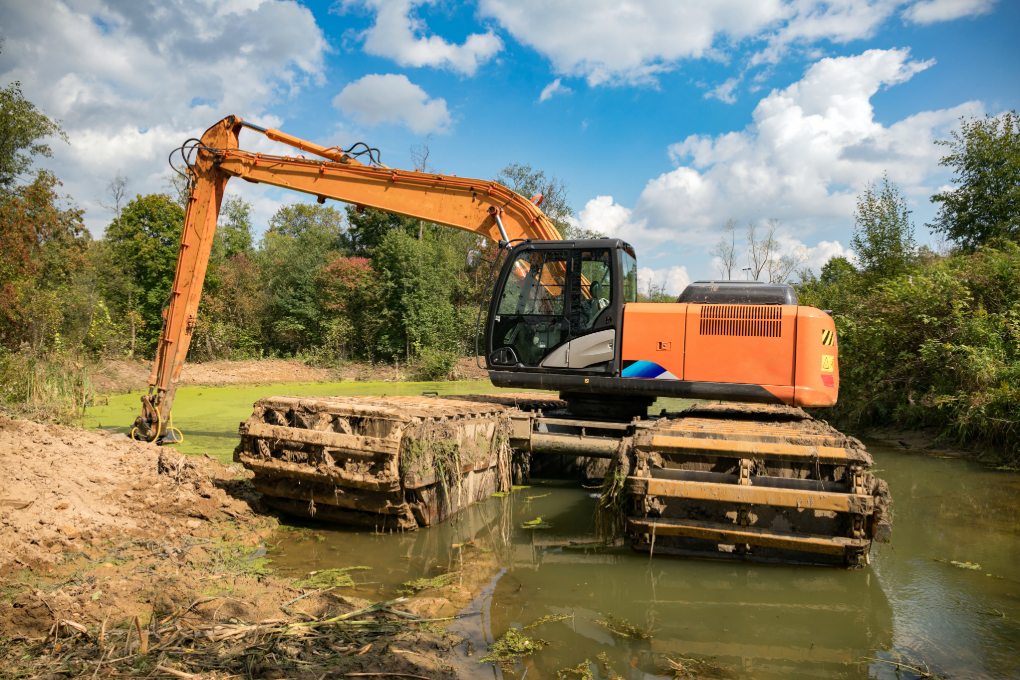
Payload restrictions – Every amphibious excavator dredge balances digging force with pontoon buoyancy. Exceeding design payload reduces freeboard and compromises safety in amphibious dredging services.
Stability in wave-exposed zones – Swell and boat wake can induce roll on the pontoons. Operators counteract with hydraulic spuds, dynamic positioning, and reduced swing radius during amphibious excavator dredging in coastal sites.
Undercarriage wear – Abrasive slurries and submerged operation accelerate track-chain and roller degradation. Proactive greasing schedules and hard-facing of wear surfaces are crucial to maintaining a productive service life.
Environmental & Regulatory Compliance
Amphibious dredging services frequently operate in environmentally sensitive zones such as wetlands, estuaries, tidal marshes, and protected aquatic ecosystems. As a result, strict regulatory compliance is required to minimize ecological disturbance and maintain water quality.
Working Within RAMSAR Wetlands, Natura 2000, and EPA/DEFRA Guidelines
When projects are located in internationally recognized conservation areas, such as RAMSAR wetlands or Natura 2000 zones (in the EU), dredging activities must comply with both national and international environmental legislation. In the U.S., operations must often align with the EPA Section 404 and Clean Water Act requirements. Contractors offering amphibious dredging services must develop and follow Environmental Management Plans (EMPs) that detail sediment control, habitat protection, and post-dredging restoration efforts.
Turbidity Curtains, Silt Screens, and Water-Quality Monitoring
To prevent the spread of suspended solids during amphibious excavator dredging, physical barriers like turbidity curtains and silt fences are deployed. These help isolate the work zone and maintain downstream clarity. Water quality is often monitored in real-time using sensors that track turbidity, pH, dissolved oxygen, and total suspended solids (TSS). Threshold breaches may require operational adjustments or temporary halts to comply with permits.
Mitigating Impacts on Aquatic Flora and Fauna
Responsible amphibious dredging services also implement timing restrictions to avoid disrupting fish spawning seasons, bird nesting cycles, and vegetation growth periods. Equipment noise is minimized, and excavation is staged to allow aquatic species to relocate naturally. In some cases, dredged material can be used for habitat creation or shoreline reinforcement, thereby contributing to long-term ecosystem benefits.
Selecting the Right Amphibious Dredging Contractor
Choosing a qualified contractor is crucial to project success, especially when operating in complex environments with stringent regulatory oversight. Not all dredging companies possess the necessary equipment or expertise for working in amphibious conditions.
Technical Vetting Checklist
Before awarding a contract, verify that the contractor:
- Owns and operates a fleet of modern amphibious excavator dredges suitable for your project size and depth
- Maintains certifications in safety (e.g., ISO 45001), quality (e.g., ISO 9001), and environmental management (e.g., ISO 14001)
- Employs experienced operators familiar with working in tidal flats, wetlands, and high-silt zones
- Can provide production data, real-time monitoring, and automated reporting tools if required by regulators
Contract Structures and Risk Allocation
Clients can engage amphibious dredging services via several contract types:
- Turnkey (Design-Build): Ideal for complex projects, the contractor handles everything from surveys to execution, usually at a higher fixed cost.
- Rental with Crew: The contractor provides equipment and operators, while the client manages planning and disposal.
- Unit-Rate Dredging: The client pays per cubic meter of material removed, incentivizing production but requiring mutual agreement on volume calculations and site surveys.
Questions to Ask During the Bid Phase
- Can you provide references from similar amphibious dredging projects?
- What production rates can your equipment achieve in soft, shallow sediment?
- What’s your contingency plan for mechanical failure or entrapment in the field?
- Do you offer remote project monitoring or daily reporting dashboards?
Maintenance, Safety, and Best Practices
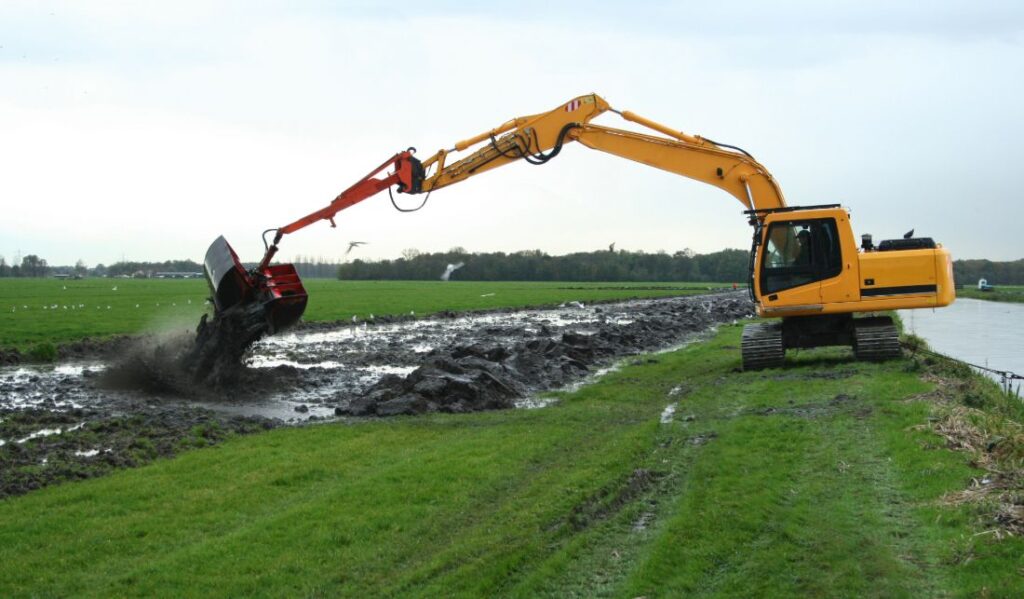
Due to the demanding conditions in which amphibious excavator dredges operate, strict maintenance routines and safety protocols must be followed to ensure reliable performance and protect personnel and the environment.
Daily Pontoon Integrity Checks and Bilge Inspections
Amphibious dredges rely on sealed pontoons for flotation. Before each workday, operators must inspect pontoons for leaks, cracks, or pressure anomalies. Bilge areas should be checked for water ingress, which can compromise buoyancy and lead to unsafe conditions.
Track Chain Tensioning and Greasing Schedules
Continuous movement in abrasive, submerged environments accelerates wear on undercarriage components. Track chain tension should be inspected and adjusted as needed, typically every 50 to 100 hours of operation. Lubrication is essential for preventing seizing, reducing vibration, and extending the life of key moving parts.
Emergency Retrieval Procedures in Soft Bottoms
Amphibious dredging services must include recovery protocols in the event that a machine becomes bogged or immobilized in deep sludge or unstable sediment. This may involve onboard winches, remote support vehicles, or the deployment of crane assistance if the equipment cannot self-extract. Having a predefined retrieval plan reduces downtime and prevents further damage to the site.
Operator Safety and On-Site Protocols
Crew members should be trained in confined space entry, hydraulic safety, and spill response. Personal flotation devices (PFDs), gas detectors, and emergency shut-off systems are standard requirements. All amphibious dredging operations should be supervised under a site-specific Health and Safety Plan (HASP) with regular toolbox talks and compliance audits.
Why Amphibious Dredging Is the Smarter Choice
Amphibious dredging services have redefined what’s possible in sediment removal, environmental restoration, and shallow-water excavation by offering unmatched mobility, efficiency, and environmental adaptability. From wetland restoration to tailings pond reclamation, the amphibious excavator dredge is a proven solution for projects where conventional methods fall short. As regulatory pressures intensify and project sites become increasingly complex, selecting a trusted partner with the right expertise and equipment is crucial. At Bayou Dredging, we specialize in delivering tailored amphibious dredging solutions backed by decades of hands-on experience in the most demanding environments.
If you’re planning a project that requires precision in soft terrain or shallow waters, please contact our team today to discuss how we can help you complete the job safely, efficiently, and on budget.
